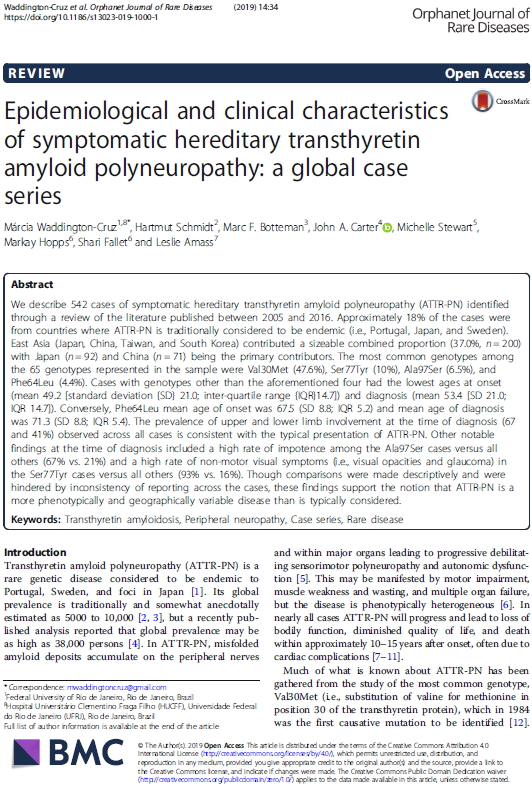Epidemiological and clinical characteristics of symptomatic hereditary transthyretin amyloid polyneuropathy: a global case series
Jul 2023
Abstract
We describe 542 cases of symptomatic hereditary transthyretin amyloid polyneuropathy (ATTR-PN) identified through a review of the literature published between 2005 and 2016. Approximately 18% of the cases were from countries where ATTR-PN is traditionally considered to be endemic (i.e., Portugal, Japan, and Sweden). East Asia (Japan, China, Taiwan, and South Korea) contributed a sizeable combined proportion (37.0%, n = 200) with Japan (n = 92) and China (n = 71) being the primary contributors. The most common genotypes among the 65 genotypes represented in the sample were Val30Met (47.6%), Ser77Tyr (10%), Ala97Ser (6.5%), and Phe64Leu (4.4%). Cases with genotypes other than the aforementioned four had the lowest ages at onset (mean 49.2 [standard deviation {SD} 21.0; inter-quartile range {IQR}14.7]) and diagnosis (mean 53.4 [SD 21.0; IQR 14.7]). Conversely, Phe64Leu mean age of onset was 67.5 (SD 8.8; IQR 5.2) and mean age of diagnosis was 71.3 (SD 8.8; IQR 5.4). The prevalence of upper and lower limb involvement at the time of diagnosis (67 and 41%) observed across all cases is consistent with the typical presentation of ATTR-PN. Other notable findings at the time of diagnosis included a high rate of impotence among the Ala97Ser cases versus all others (67% vs. 21%) and a high rate of non-motor visual symptoms (i.e., visual opacities and glaucoma) in the Ser77Tyr cases versus all others (93% vs. 16%). Though comparisons were made descriptively and were hindered by inconsistency of reporting across the cases, these findings support the notion that ATTR-PN is a more phenotypically and geographically variable disease than is typically considered.

